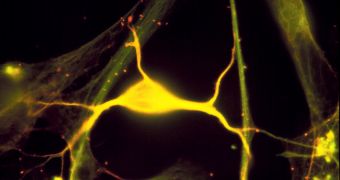A group of investigators in the United States announces the development of a groundbreaking new technology, which can be used to harness the electrical signals being passed through the human brain.
This amazing achievement was made possible by relentless work from experts at the University of Michigan School of Kinesiology, who collaborated with researchers from the University of California in San Diego (UCSD) Swartz Center for Computational Neuroscience.
With the new discovery, it is conceivably possible to develop a device that would allow a paralyzed person to lift their foot, or flex a finger, actions that they would otherwise be unable to perform.
The method is essentially a very important part of the touted brain – computer interface (BCI), a construct that interacts with people's minds directly on one end, and with electronic devices such as mechanical prosthetics on the other end.
Researchers hope that, by running what the brain wants through a computer, they can construct robotic limbs that would act just like the real deal. But the main issue here is isolating the correct signals.
The human brain, with its 100 billion+ neurons, is a very “noisy” place as far electrical signals go, and detecting just specific ones from the sea of information is very difficult.
Yet, this is exactly what the new research team did. The collaboration identified a method of isolating and measuring electrical brain activity in moving people in a non-invasive manner.
This research effort was detailed in a series of three research papers, who were all authored by School of Kinesiology associate professor Daniel Ferris. He is working on developing a BCI as well.
“Of course that is not going to happen soon but a step toward being able to do that is the ability to record brain waves while somebody is moving around,” adds Joe Gwin.
The UM Deparment of Mechanical Engineering expert is the first author of the three papers, and also a graduate research fellow in the School of Kinesiology at the university.
Works such as this could also have a great influence on the way treatments as a whole are designed, the investigators say. Making the databases of how electrical signals travel in the brain public could contribute to the development of new solution.
“We could image the brains of patients with various different types of neurological disorders, and we could potentially target rehabilitation to subsets of patients that show similar symptoms,” Gwin explains.
“If we could image the brain while going through some of this rehabilitations we could design the treatments better,” he concludes.

 14 DAY TRIAL //
14 DAY TRIAL //